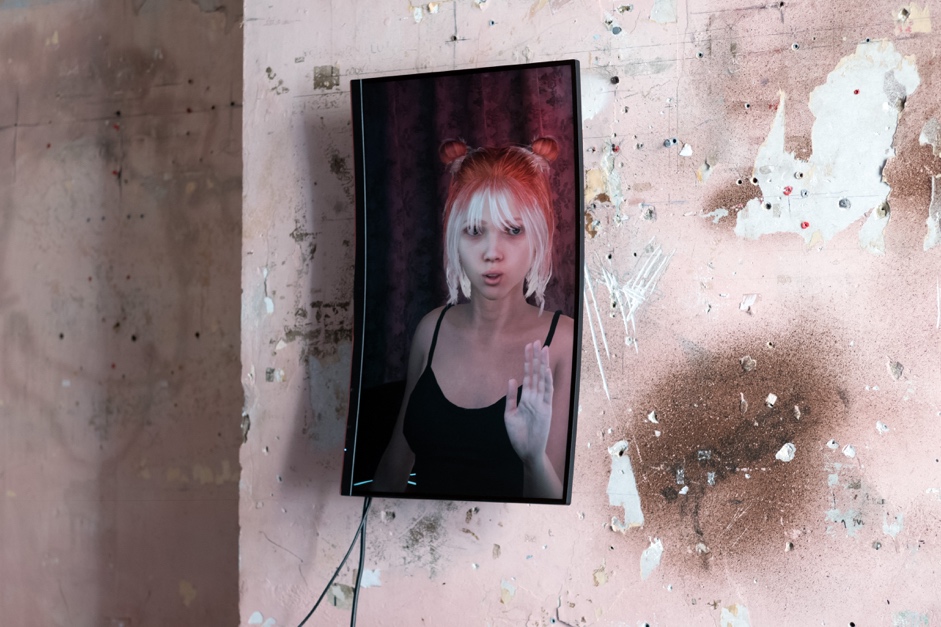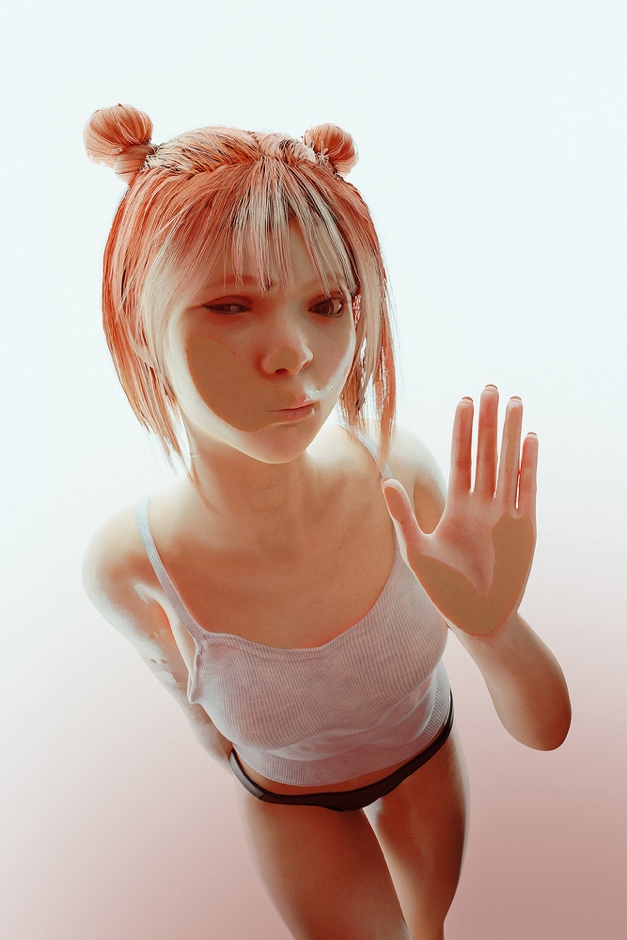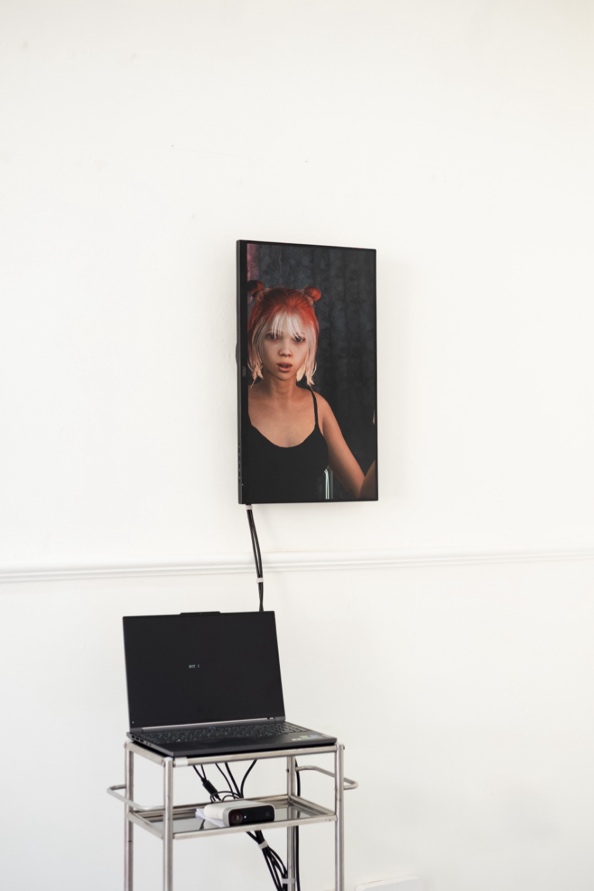In an era where digital embodiment is no longer a concept but has become a cultural norm, Hanbing Fang’s video installation Illusive Lover transcends the boundaries of the screen and engages with a question in a deeply personal manner: In what ways can a digital avatar challenge our sense of “self”?
Illusive Lover is an immersive experience where Hanbing creates a mixed reality space behind and in front of the screen, blending the digital and real worlds. The illusive lover, a digital representation of the Hanbing herself, naturally starts talking when she sees a viewer in her sight. The capacity for the work to respond to the presence of the viewer is facilitated by a motion tracking sensor, which tracks the viewer’s position while simultaneously adjusting the perspective of the digital image on the screen. The process transforms two-dimensional screen images into three-dimensional virtual spaces. The work uses conventional screens as its display medium, yet produces unconventional effects, creating an illusion of spatial disorientation for the viewer.

Considering herself a digital native, Hanbing was shaped by the age of high technology, having grown up amid the ubiquity of screens and cybernetic systems. This experience has had a profound impact on both the visual and conceptual language of her work. Drawing extensively on posthuman and postmodern theory, she not only conducts research or critiques but also positions herself within it, thereby allowing her practice to unfold as a personal and private narrative. In Illusive Lover, this narrative takes the form of a relationship with her avatar, a virtual self, creating a space where existence and identity are fragmented or completely reimagined.

London Design Festival
Illusive Lover does not present a conventional narrative, nor does it merely mimic or mirror reality in a predictable, mechanical way. It flickers, hesitates, and appears distant, yet subtly hints at a more unstable and tense emotional intensity. The viewer’s presence triggers the poetic narrative, initiating interaction with the digital avatar. Through sensor tracking and programmed control, the installation generates the illusion of a three-dimensional space unfolding behind the screen. This virtual dimension extends beyond the screen, establishing a connection between the world within the screen and the world beyond it, thereby effectively breaking down the boundary of “the fourth wall”. It is within this ambiguity that the work evinces its emotional potency. The digital avatar’s desire for intimacy or recognition is conveyed to the audience, but what they receive is a ghostly digital echo, perpetually in a state of being just out of reach yet ever within grasp.

A subtle yet emotionally intricate choreography characterises Hanbing’s manipulation of time and presence. The work does not merely pose the question, “Who am I?” but also delves into deeper philosophical and existential themes, reflecting on the definitions of self and life. In doing so, Illusiver addresses one of the most pressing questions of the digital age: what it means to be human when our identities are inextricably linked with those of machines?

Illusive Lover can be regarded as a departure from the conventional, representing a transcendence of the ephemeral. It is notable for its lingering psychological and philosophical dissonance. In an era where AI-generated influencers, virtual companions, and algorithmic intimacy are becoming cultural norms, Hanbing does not primarily engage in critical analysis of these trends. She has opted to immerse herself in the experience, subsequently narrating the emotional and existential consequences of these phenomena. Her responses are not definitive; rather, she gently encourages a period of reflection that exists in a state of uncertainty and ambiguity, leaving the viewer with soft trails of digital echoes.

